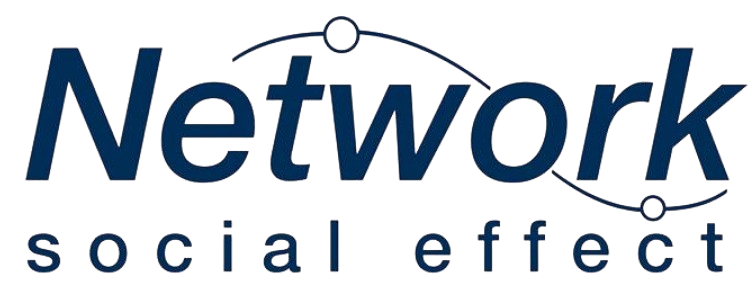
Exposing Misinformation: Unraveling Fake News in Media
Article delves into the pervasive issue of fake news and misinformation in the digital age, emphasizing its detrimental effects on public trust, health, safety, and democratic processes.

Identifying fake news is critical in today’s digital age, where misinformation on social media can quickly spread, affecting public opinion and even democracy. The rise of digital news sources has led to an increase in both reach and the dissemination of misinformation and disinformation, with the latter being deliberately spread by those aware of its falsehood. Definitions differentiate fake news into misinformation, the unintentional spread of false information, and disinformation, which is intentionally deceitful, encompassing various types including fabricated and manipulated content. The widespread impact of these phenomena, particularly among young people, is alarming, with potential consequences including scams, harmful belief systems, and a general state of confusion and distrust.
To navigate this landscape, understanding the process of fact-checking, recognizing the types of fake news, and employing media literacy are paramount. Strategies to counter fake news involve debunking false narratives, fostering a misinformation effect psychology definition that sheds light on human susceptibility to novelty, and promoting online misinformation awareness. As misinformation spreads through echo chambers and popularity metrics on platforms like Twitter, confronting it requires both technological interventions and a collective effort to prioritize content quality over virality. This article aims to unravel the complexities of fake news, offering insights into detecting and combating misinformation for a more informed public.
The Consequences of Fake News
The Consequences of Fake News
-
Impact on Public Trust and Media Credibility
-
The proliferation of fake news contributes significantly to the erosion of trust in mainstream media, leading to increased public skepticism about the credibility of traditional news sources. This skepticism can extend to all forms of media, casting doubts on the integrity of information universally.
-
Influence on Public Health and Safety
-
Misinformation in critical areas such as health and disaster response can have dire consequences, potentially leading to preventable casualties or exacerbating crisis situations. For instance, the spread of incorrect information during a pandemic can result in individuals disregarding essential health guidelines, thereby increasing the spread of disease.
-
Political and Social Repercussions
-
Fake news plays a manipulative role in politics by influencing elections and undermining democratic institutions, which can alter the outcome of elections and disrupt the functioning of democracies. Additionally, it can fuel harmful conspiracy theories and socially divisive rhetoric, leading to increased social unrest and discrimination. The spread of such misinformation can intensify social conflicts and even provoke incidents of violence and civil unrest, as seen in various global contexts.
By addressing these multifaceted impacts, it becomes evident that the stakes are high when combating misinformation. The ripple effects of fake news not only undermine societal trust and cohesion but also pose significant risks to public safety and democratic processes.
Combating Fake News
Promoting Responsible Information Sharing
-
Educational Initiatives: Enhancing public understanding through education on media literacy and critical thinking is fundamental. By equipping individuals with the skills to identify misinformation, they can discern the reliability of sources and the accuracy of news content.
-
Professional Journalism: Supporting robust journalism practices helps maintain a high standard of news reporting. Encouraging independent, professional journalism fosters a media environment that prioritizes truth and accountability.
-
Fact-Checking Support: Strengthening and supporting organizations dedicated to fact-checking can significantly reduce the spread of falsehoods. These entities are crucial in verifying data and debunking misinformation effectively.
Role of Technology and Social Media
-
Algorithm Adjustments: Social media platforms have the capability to alter algorithms to decrease the visibility of fake news and instead promote verified information.
-
Innovative Technology: Investing in technology that can automatically detect and flag fake news helps in preemptively stopping the spread of misinformation. This includes the development of AI systems that can learn and adapt to new tactics used by sources of fake news.
-
User Accountability: Implementing policies that encourage real-name usage and holding users accountable for the information they spread can decrease anonymity and reduce misinformation dissemination.
Collaborative Efforts to Enhance Media Literacy
-
Multidisciplinary Approaches: Combining efforts from various sectors including government, technology firms, and educational institutions ensures a comprehensive strategy against misinformation. These collaborations can lead to innovative solutions and broader awareness.
-
Global Education Programs: Establishing ongoing global programs that focus on educating internet users about the importance of critical thinking when interacting with digital content is essential. This helps build a more discerning audience that can challenge and question the veracity of the information they consume.
-
Diverse Perspectives: Encouraging individuals to follow a variety of news sources and perspectives can expose them to a broader range of information, aiding in better understanding and reducing biases.
The Role of Technology
Utilizing Advanced Technologies in Misinformation Detection
-
Integration of AI and Machine Learning: Artificial Intelligence (AI) plays a pivotal role in identifying and combatting fake news by analyzing content patterns and deviations from verified information. AI systems can trace the core story, identify variations, and compare these against a database of labeled content to estimate the degree of misinformation. Additionally, machine learning algorithms are employed to enhance the detection process, capable of identifying fake news by comparing it to known false narratives.
-
Blockchain and Advanced Research: Binghamton University’s School of Management (SOM) leverages machine learning and blockchain technology to identify misinformation that could cause significant public harm. This research helps pinpoint critical areas where misinformation efforts should be concentrated. Blockchain technology aids in classifying misinformation sources, enabling the recognition of dissemination patterns, which can be crucial in preemptive measures.
-
Media Literacy Tools and Collaborative Projects: Tools like NewsGuard rate news sites on their credibility using journalistic criteria, aiding users in discerning reliable information sources. The DISSIMILAR project, led by the Universitat Oberta de Catalunya, focuses on differentiating between original and altered multimedia content. This initiative provides tools for content creators to watermark their work, making modifications easily detectable, and offers advanced machine learning methods for users to identify fake digital content.
These technological interventions, combined with responsible platform policies and educational initiatives, form a comprehensive strategy to mitigate the spread of misinformation and enhance public media literacy.
Detecting and Combating Fake News
Tools and Techniques for Identifying Misinformation
-
Quick Fact-Checking Resources: Utilizing platforms like Snopes, FactCheck.org, and Politifact is essential for verifying the accuracy of information quickly and efficiently.
-
Educational Methods: The ACT-Up Method (Author, Currency, Truth, Unbiased) and the IMVAIN Method (Independent, Multiple sources, Verifiable, Authoritative, Informed, Named) provide structured approaches to assess information credibility and identify potential fake news.
-
Linguistic Analysis: Employing linguistic analysis either through human expertise or software programs helps in detecting misinformation by analyzing the language and presentation style used in the content.
Innovative Approaches to Combat Misinformation
-
Crowdsourced Accuracy Ratings: Researchers are investigating the effectiveness of crowdsourced accuracy ratings to gauge the reliability of information, which could potentially limit the spread of false content.
-
Behavioral Nudges: Implementing nudges that prompt users to think critically about the accuracy of the information before sharing it online can significantly reduce the dissemination of misinformation.
-
Mental Inoculation Techniques: Mental inoculation against common deceptive techniques is being explored as a method to prepare individuals to identify and reject false information proactively.
Advanced Detection Strategies
-
Non-Content-Based Detection: Detecting fake news through topic-agnostic features, which do not rely solely on the content but consider other aspects like source credibility and dissemination patterns, can offer a more robust defense against misinformation.
-
Combination of Techniques: Integrating various methods such as educational initiatives, technological tools, and psychological strategies has shown promise in effectively curbing the spread of fake news and misinformation.
Combating Fake News: Strategies and Solutions
Recognizing and Educating on Misinformation
-
Public Awareness Initiatives: It is crucial to raise public awareness about the unreliability of certain news sources. By actively calling out misinformation when encountered, individuals and organizations can contribute to a more informed society.
-
Enhanced Media Literacy: Encouraging comprehensive media literacy programs can empower individuals to distinguish between different types of content like news, feature articles, and editorials. This understanding is vital for recognizing misinformation and assessing the credibility of the information consumed.
-
Critical Thinking in Education: Integrating critical thinking and awareness of cognitive biases into educational curriculums can equip young minds to question and analyze the information they receive. This approach helps in building a foundation that is skeptical of disinformation.
Legislative and Professional Approaches
-
Stricter Regulations: Implementing more stringent laws and regulations on social media platforms can help curb the spread of false information. These measures would require platforms to take active steps in monitoring and controlling the dissemination of potentially harmful content.
-
Supporting Responsible Journalism: Promoting adherence to journalistic ethics and supporting independent, professional journalism are essential for maintaining the integrity of information. High-quality journalism attracts a more discerning audience, which in turn helps in building trust and reducing the spread of misinformation.
Technological and Collaborative Measures
-
Investment in Detection Technologies: Allocating resources to develop and refine technology that can identify and flag fake news is a proactive approach to combating misinformation. These technologies include AI and machine learning systems that analyze content patterns to detect falsehoods.
-
Crowdsourcing for News Verification: Utilizing crowdsourcing to assess the accuracy and priority of news coverage can provide a democratic approach to news verification. This method involves the community in ensuring the reliability of information being circulated.
-
Enhancing Online Accountability: Strengthening online accountability measures, such as enforcing real-name policies, can reduce anonymity and discourage the spread of misinformation. Such policies make it more challenging to monetize hoaxes and fake news.
By integrating these strategies, from educational reforms to technological advancements, the fight against fake news can be more dynamic and effective. Each measure plays a critical role in creating a more informed and skeptical public, capable of discerning truth in the complex landscape of modern media.
Conclusion
Through the lens of this article, we have journeyed through the murky terrain of misinformation and disinformation, distinguishing between their types and understanding the strategies to counter their spread. The importance of fact-checking, the promotion of media literacy, and the development of advanced technologies form a trifold approach to combating fake news. Each of these strategies, whether aimed at individuals or at the broader echelons of society, underscores the critical need for vigilance and responsibility in consuming and sharing information online. The consequences of misinformation, ranging from undermining public trust to endangering public health and safety, highlight the imperative for concerted efforts in this regard.
As we move forward in this digital age, the role of technology, alongside educational and legislative measures, presents a comprehensive front against the proliferation of fake news. The collaborative efforts between various stakeholders, including journalists, educators, tech companies, and policymakers, indicate a pathway toward a more informed and resilient society. For those seeking to delve deeper and contribute to this ongoing battle against misinformation, a visit to the project FACT page offers valuable insights and resources on how best to discern truth in our increasingly digital world. By fostering an environment where truth prevails, we safeguard not only our individual discernment but also the foundational pillars of democracy and public discourse.
